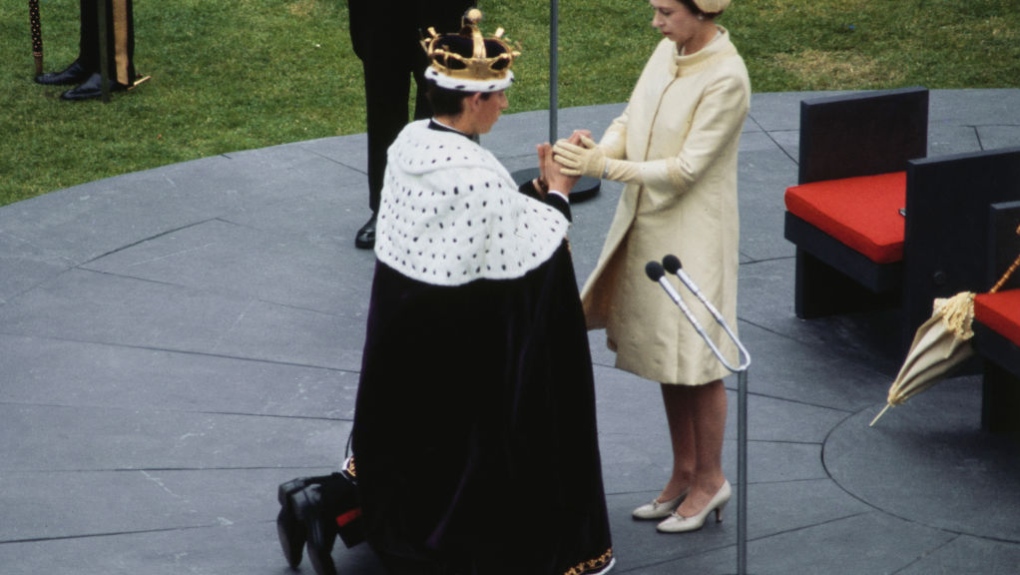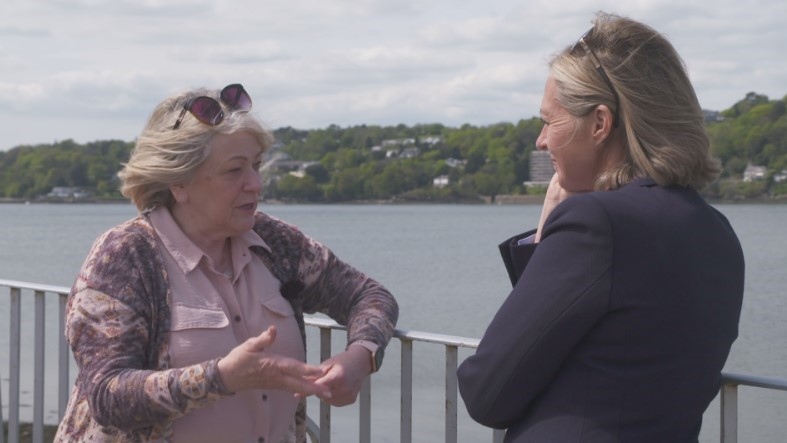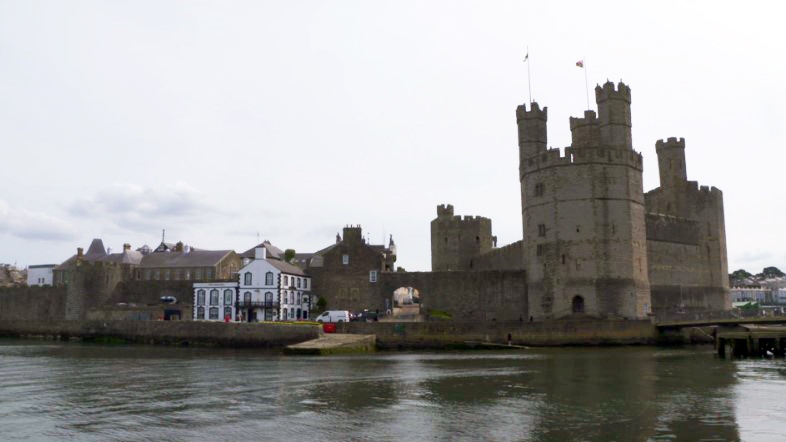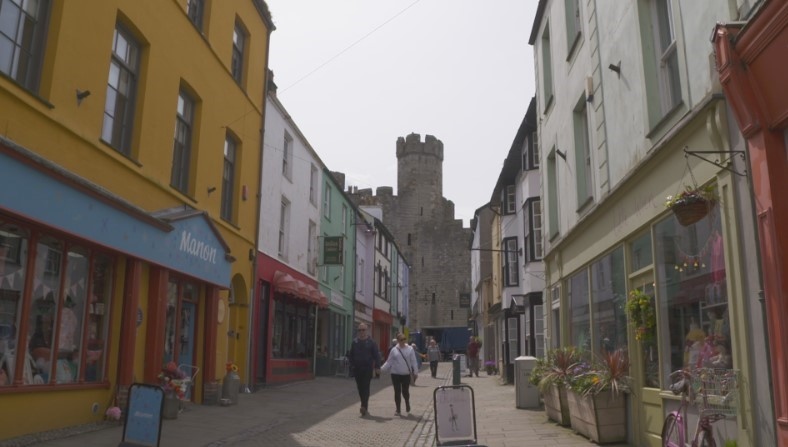A pretty town in Wales that staged a lavish ceremony for then Prince Charles on Canada Day in 1969 is now preparing to all but ignore the King’s coronation.
At Westminster Abbey on Saturday, a bass-baritone accompanied by a choir, will sing a hymn in Welsh, a first in coronation history. But few in Caernarfon are expected to watch or listen, though the town has a historic connection to King Charles III.
Days before the moon landing more than half a century ago, 500 million people worldwide tuned in to watch the televised investiture of Charles as the Prince of Wales at the mighty Caernarfon Castle.
Four thousand guests were invited for the ceremony to witness the moment a pale 20-year-old Charles knelt before his mother Queen Elizabeth II, put his hands in hers and pledged his allegiance.
The crowning of the Prince of Wales came more than a decade after he was bestowed the title, and was a show of pomp and circumstance, in large part designed to quell growing nationalist sentiment in this part of the United Kingdom.
 Elizabeth II places the gold coronet onto the head of her son, Charles, Prince of Wales, who wears a ceremonial robe trimmed with ermine, during the Prince of Wales investiture ceremony at Caernarfon Castle in Caernarfon, Gwynedd, Wales, July 1, 1969. The ceremony is conducted on a circular dais made of Welsh slate. (Photo by Fox Photos/Hulton Archive/Getty Images)
Elizabeth II places the gold coronet onto the head of her son, Charles, Prince of Wales, who wears a ceremonial robe trimmed with ermine, during the Prince of Wales investiture ceremony at Caernarfon Castle in Caernarfon, Gwynedd, Wales, July 1, 1969. The ceremony is conducted on a circular dais made of Welsh slate. (Photo by Fox Photos/Hulton Archive/Getty Images)
Caernafron’s mayor, Maria Sarnacki, was a young schoolgirl then and went to a spot just outside castle walls with her class.
"It was just spectacular for a little girl of 12 years old," she told CTV News. "There wasn't a spot on the main square. I am convinced to this day that the Queen pointed to me and told Charles to wave. The prince waved to me, it was just amazing, something I will never ever forget."
 Caernafron's mayor, Maria Sarnacki (left), speaks with CTV News' Genevieve Beauchemin
Caernafron's mayor, Maria Sarnacki (left), speaks with CTV News' Genevieve Beauchemin
Sarnacki said every road in town was closed for a street celebration that day, but that for this Saturday's coronation, no one wants a party in Caernarfon.
Instead, there is a march scheduled to protest against the high cost of housing. The timing is no coincidence.
"The public money spent on this coronation is going to be sickening,” said Alun Wyn Jones, the town clerk who says he is a lifelong republican. "The man is a billionaire twice over and he is spending money, at a time when there is huge deprivation within society, on a festival of him. It is very strange."
 Alun Wyn Jones, Caernarfon's town clerk, speaks with CTV News' Genevieve Beauchemin
Alun Wyn Jones, Caernarfon's town clerk, speaks with CTV News' Genevieve Beauchemin
Caernarfon is a town of nearly 10,000 people that sits opposite the Isle of Anglesey. Many of the locals affectionately declare it “the most Welsh town in the universe.”
It is at the heart of a revival of the Welsh language and nationalist sentiment.
 Map showing the town of Caernarfon, with a population of 9,852 according to the latest available census, in Wales (Jasna Baric / CTV News Graphics)
Map showing the town of Caernarfon, with a population of 9,852 according to the latest available census, in Wales (Jasna Baric / CTV News Graphics)
The castle is a fortress-palace perched on the shoreline of Wales. It was built in 1283 by Edward I as he battled the Welsh princes, and is now part of a UNESCO World Heritage site.
The building is also considered one of the greatest structures of the Middle Ages, and attracts thousands of tourists each year.
And while they admire the majestic stone structure, to many who call this royal town home, the castle is also an irritating symbol of imperial military and economic power.
"It is a colonialist symbol," said Jones, who is also a historian. "It is a fantastic tourist attraction, there is no doubt about that. But the history of it has to be thought about in the right context."
 A view of Caernarfon Castle from the harbour in Caernarfon, Wales (CTV News)
A view of Caernarfon Castle from the harbour in Caernarfon, Wales (CTV News)
Before he became King, Charles was the longest serving Prince of Wales. And by all accounts, it is a title he will miss.
He spent 10 weeks before his investiture in a retreat, where he learned about Welsh culture, history and language. He surprised many on that July 1 in 1969 by delivering his replies during the ceremony in both English and Welsh.
Just last year, days after his mother’s death, he travelled to the capital Cardiff on his first visit as monarch, and in a speech in both English and Welsh, said Queen Elizabeth had a special place in her heart for Wales.
To a good portion of the population of Caernarfon, the feeling isn’t mutual. There was affection for the Queen, but less for the monarchy or for the title of Prince of Wales, first bestowed as a humiliating blow to those who were conquered.
"How can you bring an English person into a Welsh country and say he is a Welsh prince? He is not," said an older man standing on a cobblestone street in the shadow of the castle.
 Palace street in Caernarfon, with Caernarfon Castle in the background (CTV News)
Palace street in Caernarfon, with Caernarfon Castle in the background (CTV News)
And the mayor, Sarnacki, who was once a young girl awed by the rituals of the monarchy in her town, said the title should be abolished. And if it isn't, she said there certainly should not be another investiture ceremony in Caernarfon for William, the new Prince of Wales.
"Money is hard and to spend all that money again is something that would not be right," she said. "And there is no Welsh blood there, so I personally don't think there should be a Prince of Wales."
But she is proud of her town's majestic castle. It was recently renovated, a three-year revamp that saw the addition of a rooftop deck, but also an elevator to make the structure more accessible.
A much needed modernization of a historic building, say many in town, that was just as needed as the modernization of the monarchy.
















































